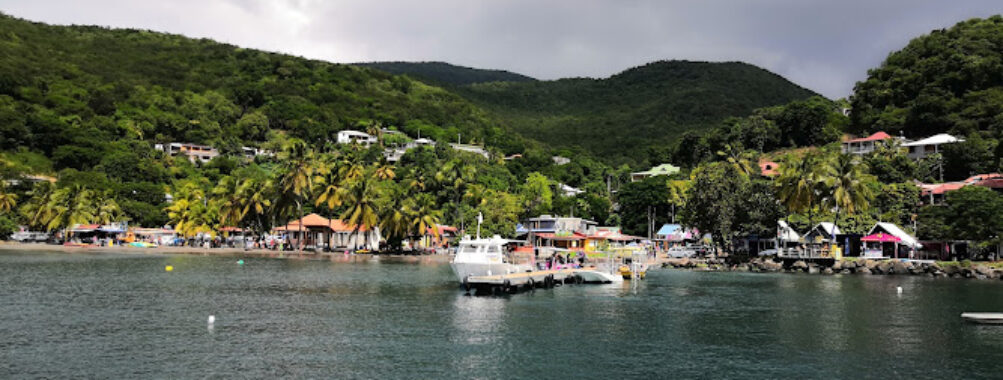
Basse-Terre Island
“`html
Table of Contents
Description
Basse-Terre Island, the western half of Guadeloupe, is the kind of place that sneaks up on you. At first glance, it’s rugged and dramatic, with its volcanic peak, La Soufrière, looming over the landscape like a watchful giant. But then you wander further—down into the rainforest dripping with waterfalls, out to the coastline where white sand beaches melt into turquoise waves—and suddenly it feels like you’ve stumbled into a place that’s both raw and soothing. It’s not polished in the way some Caribbean islands are, and honestly, that’s part of its charm. The island feels alive, untamed even, and that makes it unforgettable. Some visitors fall head over heels for its wild beauty, while others find it a bit too intense or unpredictable. And that’s fair. But if you’re the type who craves adventure mixed with a dose of serenity, Basse-Terre has a way of pulling you in and not letting go.
Key Features
- La Soufrière volcano, an active peak you can actually hike (if you don’t mind a bit of sulfur in the air)
- Tropical rainforests with countless trails and waterfalls—Carbet Falls is the star, but smaller hidden cascades are just as magical
- White sand beaches on the western coast, perfect for swimming, snorkeling, or just lazing with a book
- Diving spots rich with marine life, including coral reefs and shipwrecks that feel like underwater time capsules
- National parks that cover much of the island, offering both protection and easy access to nature
- Local markets where spices, rum, and fresh tropical fruit fill the air with heady scents
- A slower pace of life compared to the busier Grande-Terre, giving it a more laid-back, authentic vibe
Best Time to Visit
Timing matters here. The dry season, roughly from December to May, is when the weather is most cooperative—less rain, more sunshine, and clearer skies for those mountain views. I personally went in March, and while it was warm, it wasn’t unbearable. Hiking La Soufrière was actually pleasant because the breeze at the top cools you off. That said, the rainy season (June to November) has its perks too. The waterfalls swell, the rainforest looks extra lush, and you’ll run into fewer crowds. The trade-off? You might get caught in sudden downpours, and hurricane season is a real consideration. If you’re flexible and don’t mind dodging showers, the wet season can feel more adventurous and rewarding. But if you’re planning your dream Caribbean getaway with minimal weather drama, stick to the dry months.
How to Get There
To reach Basse-Terre, most travelers fly into Pointe-à-Pitre International Airport on Grande-Terre, which is the main gateway to Guadeloupe. From there, it’s about an hour and a half drive across the bridge that connects the two islands. Renting a car is honestly the best option, since public transportation isn’t super reliable and taxis can get pricey. Driving in Basse-Terre is an adventure of its own—curvy mountain roads, sudden rain showers, and the occasional goat wandering across the street. But that’s all part of the fun. If you’re not keen on driving, there are tours that will pick you up and take you around the highlights, though you’ll miss out on the freedom to stop and explore random beaches or viewpoints along the way.
Tips for Visiting
First and foremost, pack proper shoes. Flip-flops won’t cut it if you plan on hiking to waterfalls or up La Soufrière. I learned that the hard way when I tried to scramble over wet rocks in sandals—slippery doesn’t even begin to describe it. Bring a light rain jacket too, because showers can come out of nowhere, even in the dry season. And don’t forget bug spray; the rainforest mosquitos are relentless.
If you’re a foodie, make time for the local cuisine. The mix of French and Caribbean flavors is incredible—think fresh seafood, spicy accras (fritters), and rum punch that sneaks up on you. Another tip: give yourself more time than you think you’ll need. The island looks small on a map, but the winding roads and endless places to stop mean you’ll always wish you had an extra day or two.
Lastly, go with an open mind. Basse-Terre isn’t a manicured resort island, and that’s exactly what makes it special. Some beaches are wild and empty, some hikes are muddy and challenging, and sometimes the weather just won’t cooperate. But that unpredictability is also what makes the island feel real. If you lean into it, you’ll leave with stories worth telling and memories that stick long after your tan fades.
“`
Location
Places to Stay Near Basse-Terre Island
Find and Book a Tour
Explore More Travel Guides
No reviews found! Be the first to review!